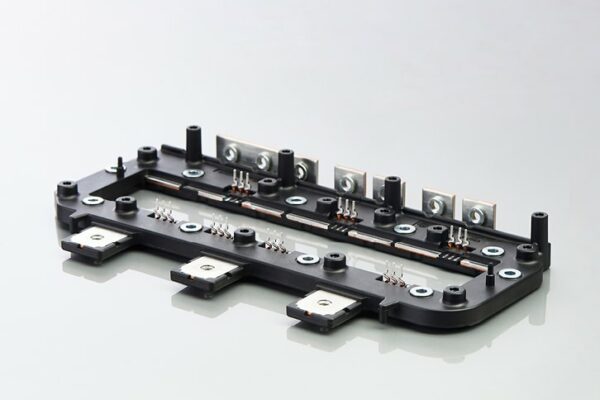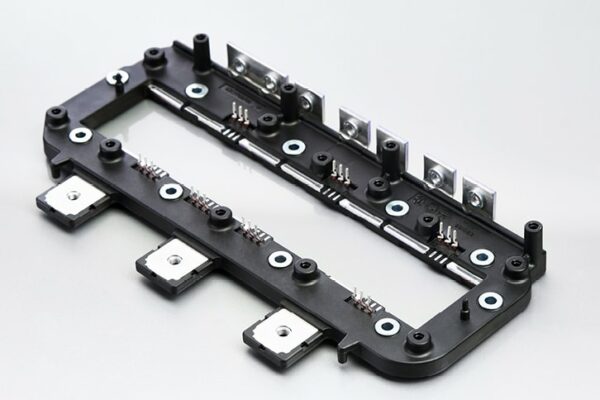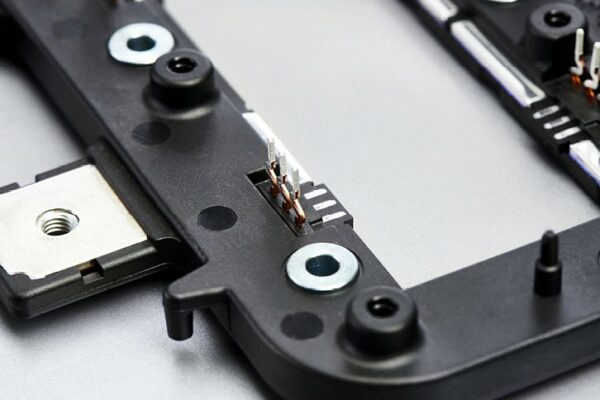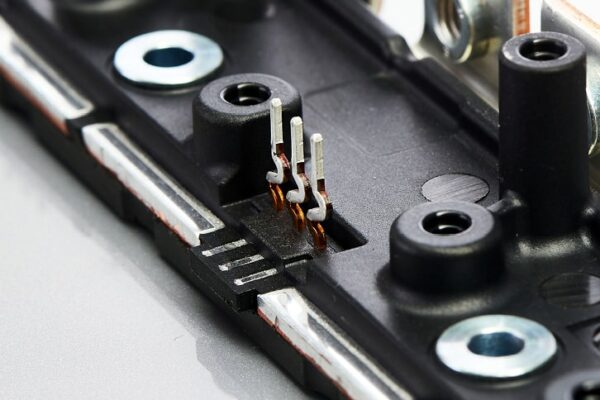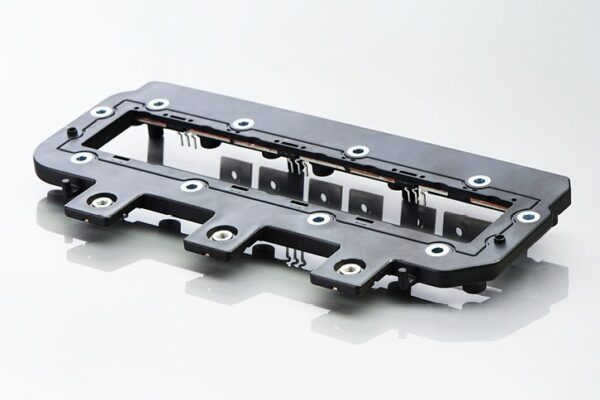Requirements
We were commissioned by a renowned Tier 1 supplier in the field of electromobility to manufacture a bonding frame used for electrical support in hybrid vehicles. Due to the diverse forces acting on it, the assembly should be designed to be extremely flat, scratch-resistant and robust. A requirement that called for all our expertise in development and process design due to the complex geometry and high number of 37 different metal inserts. In addition, the automotive bonding frame had to provide maximum high voltage and insulation resistance between the live components. The fact that there was only one supplier for AlSi-coated copper at the start of the project, with correspondingly long delivery times, presented another challenge for our planning team.
Process
All the necessary development, toolmaking, production and assembly steps are carried out in a tested process at our site in Helmbrechts. We cover almost the entire vertical range of manufacture in plastics processing and metal working: from stamping and bending contacts and inserts, injection molding the insulation board to automated assembly and packaging. Production is carried out on extremely efficient rotary table machines, which ensure consistent quality at high volumes. By designing the bonding frame in sub-assemblies and pre-molded parts, we can significantly shorten the insertion process.
On the plastics side, an extremely robust thermoplastic PPS GF40 is processed with the required insulation properties. For the inserts, a CuSn6 with AlSi roll cladding was chosen, which is a material distinguished by good strength and at the same time very good electrical conductivity values.
Each process step is permanently monitored using state-of-the-art measuring technology, gages, dial gages and calipers, and documented in the CAQ system. A 100% high voltage test ensures that all contacts and bushes are fully installed. In addition, other relevant characteristics are checked in the automatic testing machine with a view to reproducibility before the pre-assembled components are packed in customized packaging units and handed over to our logistics department.
Result
It was possible to set the course for an efficient and successful series production run right from the start on the basis of a suitable component design for production. Thanks to the synchronous further development during the process, we manage to achieve a higher affinity to shocks and vibrations. The geometry is also perfectly fine-tuned to the printed circuit board on the basis of the measurement results. By mapping all the process steps in-house, we increase the efficiency during the process and can save costs along the entire value chain at the same time.
Convinced?
Start project now
Call us or write to us. Let’s get your idea into series production together.

